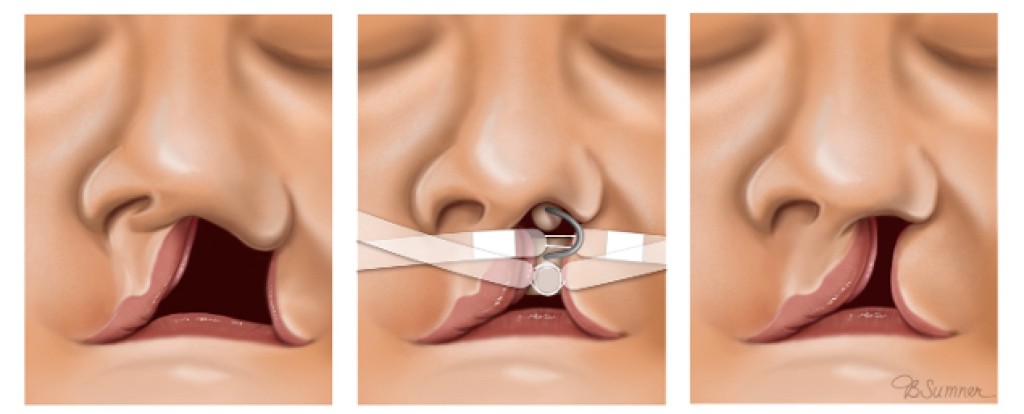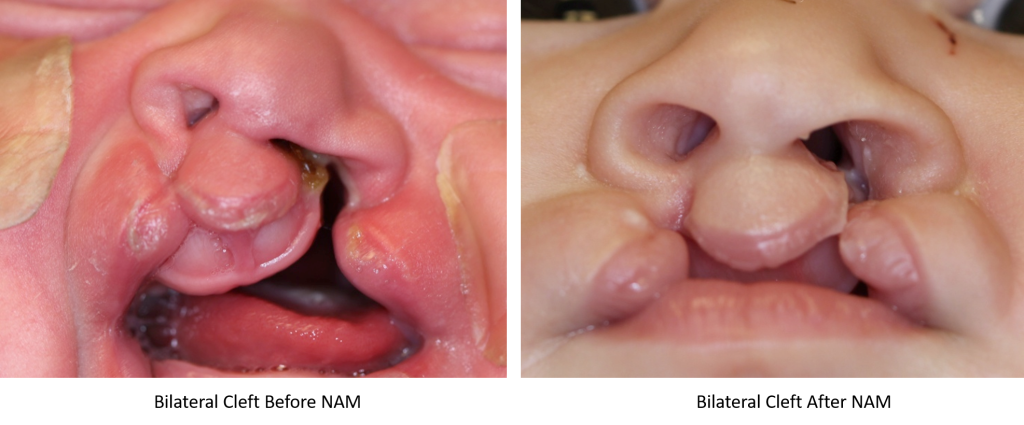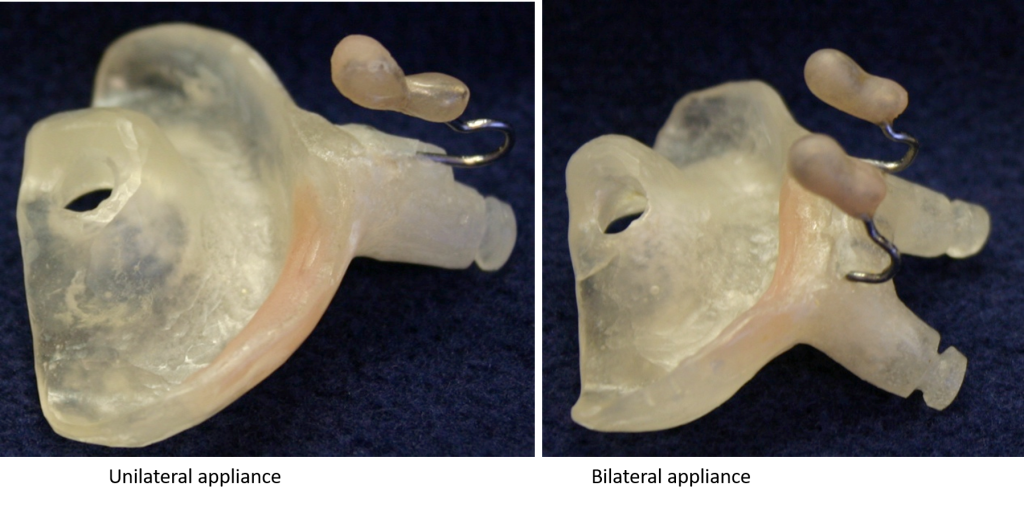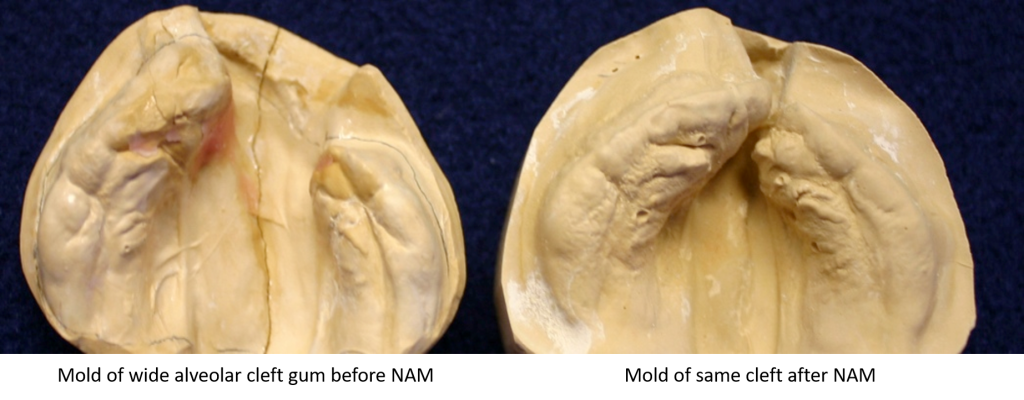Naso-alveolar molding (NAM) is an orthodontic treatment for newborns that involves the use of custom appliance to reduce the severity of the cleft before the cleft lip repair at 3 to 6 months of age. Our craniofacial orthodontist has decades of experience with this powerful technique after he completed his fellowship with the inventor of NAM in New York.
- The skin and cartilage of a newborn's nose and lip are very flexible. These characteristics allow the orthodontist to change the position of the gums, lip and shape of the nose in preparation for surgery
- The goal of NAM is to reduce the size of the cleft at the levels of the lips and gums and improve the shape of the nose.
- The appliance works by slowly decreasing the width of the cleft of the lip and gums. This results in improved gum alignment and helps to improve the shape of the nose. This preparation can help improve surgical results.

Before (left), during (middle) and after (right) NAM treatment.


- We like to start NAM treatment in the first few weeks after a baby with a cleft is born and to continue until your child is ready for cleft lip repair.
- It can begin as soon as we know that your child is eating well and gaining weight. Treatment time depends on the severity of your child's cleft.
- Average NAM treatment time is 3 to 4 months for a baby with a cleft lip on one side (unilateral) and 4 to 5 months with a cleft on both sides (bilateral).
- If NAM is an appropriate therapy for your child, we will use a type of putty to make an impression of your child’s palate. Our orthodontist will use this to make an acrylic plastic mouthpiece that covers the roof of your child’s mouth and gums. It is similar to a retainer that older children use after finishing braces.
- This mouthpiece closes over the cleft gap between the mouth and nose cavities and protects your child's delicate nasal tissues from the rough surface of the tongue.
- The mouthpiece can also help your child feel better because it provides a solid surface against which they can press the bottle's nipple.

- Each NAM device is custom made and is held in place by small rubber bands that are taped to your child's cheeks. Over the next 3 to 6 months, our orthodontist will adjust the mouthpiece to guide your child's natural growth to narrow the clefts of the lips and gums and gradually close the cleft.

- You will initially need to visit our clinic every week for the device to be adjusted, but these visits will slowly start to be spaced further apart.
- When the gap between the lips and gums (alveolar cleft) is small enough (around ¼”), we will add a small supportive extension post (nasal stent) to the mouthpiece to lift and shape your child's nostril. The nasal stent is made of orthodontic wire and soft dental material. Our orthodontist will carefully adjust the nasal stent wire to restore gradually the shape of your baby’s nose.

- By bringing the lip and gum segments together and restoring the shape of the nose before surgery, NAM can contribute to better outcomes after cleft lip repair.
- NAM treatment is not for every baby or family. If your child does not receive NAM treatment, our plastic surgeons can still achieve an excellent result.
We will need you to be an important part of our care team when treating your baby with NAM. We will slowly teach you how to change the medical tape daily and keep the mouthpiece clean. In the beginning, this can be frustrating, but with time, you will quickly become an expert. Our team will always be available for any questions you may have.